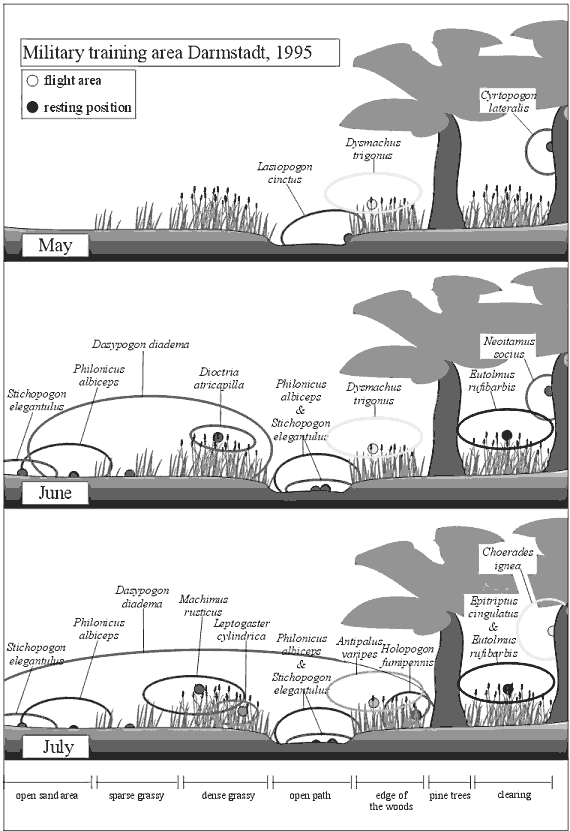g
Start g
- Robber flies of Germany -
Key Catalogue Comparisons [Notes] Terminology
Notes
Overview
- General
- Distribution
- Collecting
- Research
- Photography
- Literature
- Internet
- Acknowledgement
- Imprint
contents & layout
& copyright:
Fritz Geller-Grimm
Imprint
Notes
Research
The diverse life histories of Asilidae make it an interesting family to study. Their large size and display of different behaviour make them ideal study objects. Even with little training in taxonomy it becomes possible to identify many species in the field and to examine the behaviour or aspects of ecological classification.
The results of your field diary can be summarized into a graphic and help to establish the ecological classification of robber flies.
We have little information of the biology of robber flies and this leaves many open questions, which are waiting to be solved. For example: How can the flies distinguish so quickly between potential prey, enemies or mates after starting their darting flight? It may be useful to take advantage of new video technologies to observe the different types of their attacks.
The complete life-cycle of robber flies is only currently known for two species. To study the life-cycle, it is often necessary to breed the larvae in the laboratory because they are entomophagous and normally live in deeper soil. Also, it is difficult to rear adults from the first instars in the laboratory (usually the third instar will not develop). Some information on this subject can be found in the outstanding papers of MUSSO.
Correct taxonomy is the foundation for further investigations. Without a good taxonomical basis, results from several disciplines, like ecology, ethology, physiology, phylogeny etc cannot be compared. 